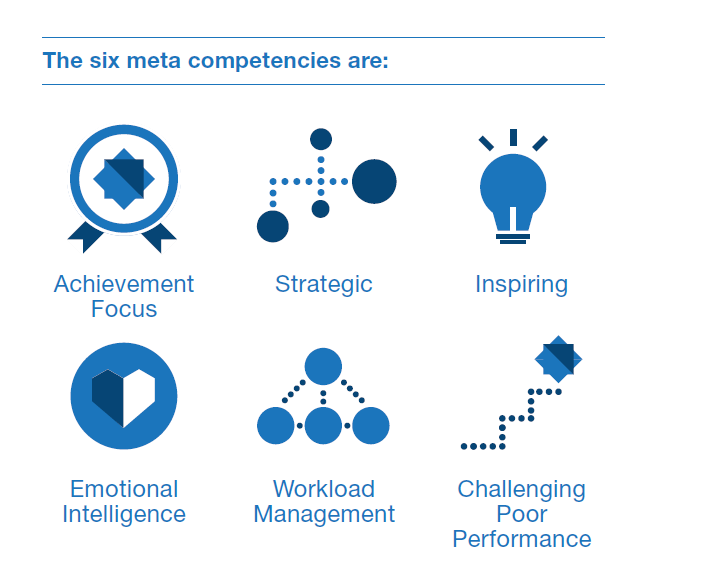Looking at the Hogan 360 benchmark results of 29,026 leaders, the researchers identified leadership strengths by job role and by top quartile results and identified the competencies that separate the most successful senior leaders from the rest of the pack.
Key Strengths
The 4 meta competencies that provide a home to 24 strengths in the most successful leaders are the following:
Achievement focus:
|
Inspiring:
|
Strategic:
|
Emotional Intelligence:
|
Strong leadership skills drive employee engagement and organizational performance.

Key opportunities to improve
Workplace reputation comes from core personality and chosen behavior. Leadership behavior can be learnt.It starts with self-awareness which comes from assessments. It then takes motivation, deliberate practice and building new mental muscles until the new competencies become second nature. As a result, competence, confidence, performance, and career success are all enhanced.
Opportunities for leaders to improve:
- Workload management
The most successful leaders try to work appropriately both ‘in’ and ‘on’ the business. They look where to add extra value by being strategic and not just operational. They see their teams as being more important than themselves. They build teams with a strong brand around both performance and culture. The team is then responsible for driving organizational performance.
John Kotter, the distinguished Harvard Business School professor, has spent a lot of time talking about the difference between management and leadership.
Getting the right balance between working ‘in’ and ‘on’ the business requires strategic self-awareness and discipline. What makes you a great manager won’t make you a great leader.
We have worked with many successful leaders who operate with an annual strategic planning cycle where they do longer term planning (3-5 years) and the one-year plans. They have quarterly reviews around team building and strategy. They use a balanced scorecard around employee engagement, customer satisfaction, service/operational excellence, and financial results. They must learn to delegate so as to be more strategic about where they can add the most value. This helps by having competent people to delegate to. The answer is having a robust recruitment/selection process to start with and to improve or remove poor performing managers. The leader must set standards because with the delegation goes the responsibility.
- Challenging poor performance
Poor performers are alive and well. Addressing poor performance comes up as a significant challenge in most 360s. There are many managers who do not have difficult conversations in a timely manner. Coworkers intensely dislike the poor performers and want their managers to take action. Poor performers should be identified on a regular basis with a view to improving or removing them in 90 days. Sometimes the discussion gets focused when you ask, “who are our bottom 10%”. This issue should be on the agenda permanently for every executive team.
Jim Collins, in “Good to Great” said the following:
“Great organizations make sure they have the right people on the bus and the right people in the key seats. Letting the wrong people hang around is unfair to all the right people who often find themselves compensating for the wrong people’s inadequacies. Get the wrong people off the bus.”
We recommend a six-step conversation process for managers talking to poor performers:
- Be clear about the issue (The performance or behavior to be addressed)
- State your expectations (How these are not being met)
- Be clear about the impact (The negative effect on performance or team)
- Get the other person’s point of view (Ask questions)
- Explain the consequences (The next steps if this is not fixed)
- Get an agreement (The details of the way forward)
*Contact us at emilia.margean@hartconsulting.eu for the Competencies of Great Leaders Whitepaper.









